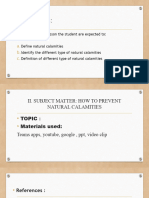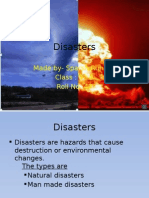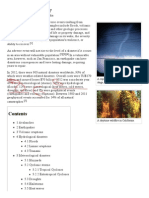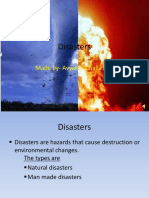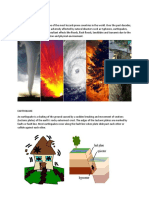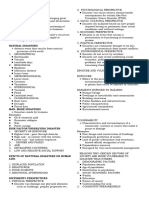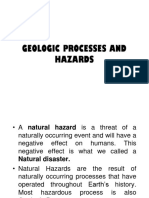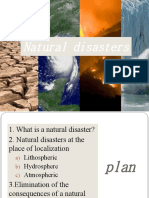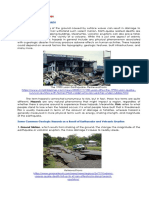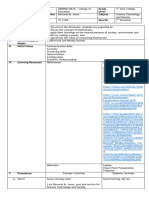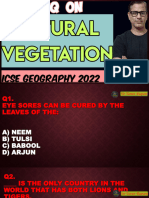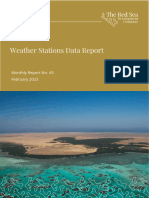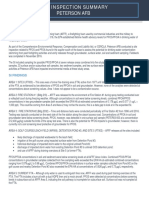0% found this document useful (0 votes)
14 views39 pagesLesson 2. Natural Disasters
The document discusses natural disasters, their types, effects, and notable historical events associated with them, such as cyclones, earthquakes, and tsunamis. It also covers geohazards and the importance of geohazard mapping for disaster preparedness and risk management in the Philippines. Additionally, it highlights the provinces most susceptible to various natural disasters and includes an assignment on preventing man-made disasters.
Uploaded by
47mxb7rvmfCopyright
© © All Rights Reserved
We take content rights seriously. If you suspect this is your content, claim it here.
Available Formats
Download as PDF, TXT or read online on Scribd
0% found this document useful (0 votes)
14 views39 pagesLesson 2. Natural Disasters
The document discusses natural disasters, their types, effects, and notable historical events associated with them, such as cyclones, earthquakes, and tsunamis. It also covers geohazards and the importance of geohazard mapping for disaster preparedness and risk management in the Philippines. Additionally, it highlights the provinces most susceptible to various natural disasters and includes an assignment on preventing man-made disasters.
Uploaded by
47mxb7rvmfCopyright
© © All Rights Reserved
We take content rights seriously. If you suspect this is your content, claim it here.
Available Formats
Download as PDF, TXT or read online on Scribd
/ 39





